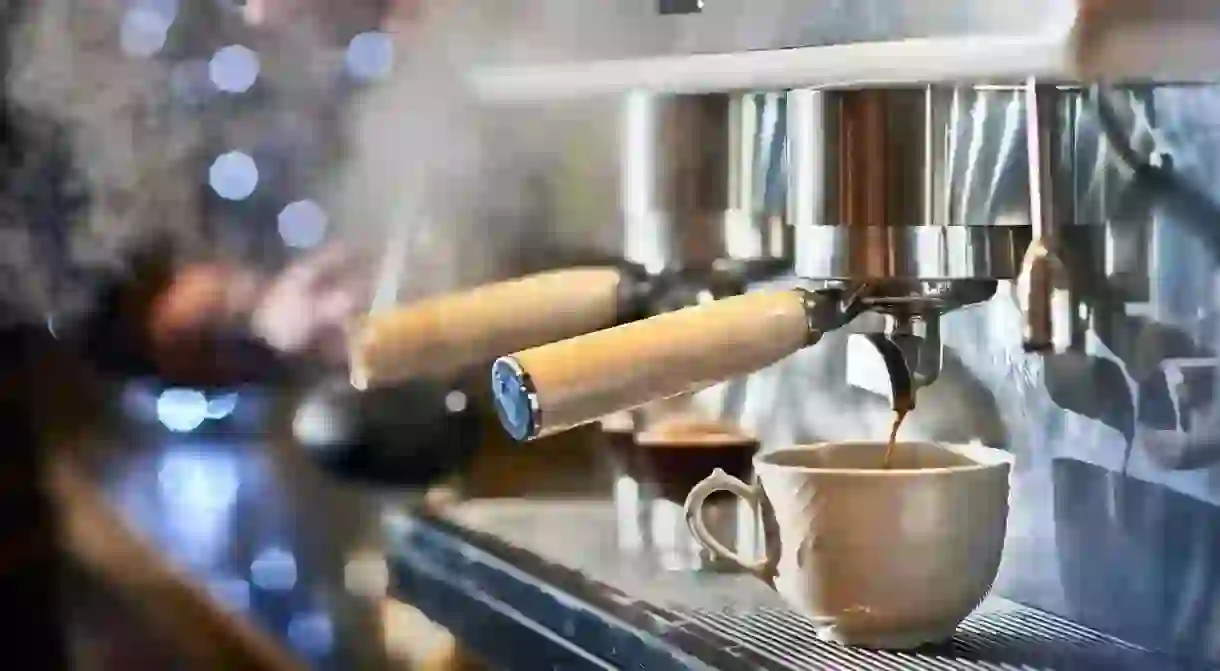How To Drink Coffee In Italy Like A Local

Italians are masters in many noble fields and endeavors, including the sacrosanct art of drinking coffee. From the vocabulary associated with the beverage and the development of machinery to brew it to a wide variety of coffee blends and some of the world’s oldest cafés, Italy has left an indelible mark on how the world discusses, drinks, and enjoys this celebrated beverage. The enticing flavor of espresso is praised throughout the country and Italians have created an entire science around ordering, brewing and drinking it. Learn about the traditions of Italian coffee culture and take note of some useful lingo to drink coffee in Italy like a local. Did you know – Culture Trip now does bookable, small-group trips? Pick from authentic, immersive Epic Trips, compact and action-packed Mini Trips and sparkling, expansive Sailing Trips.
The Illustrious History of Italian Coffee
One of the oldest cafés in Europe, and a prime contender for the world’s longest continuing coffee house, is Caffè Florian in Venice. This opulent café, lying beneath porticos in Piazza San Marco, opened in 1720 and continues to brew coffee for Venetians, Italians and international visitors at what has now become a symbol of the city. Italy also introduced the first steam-pressure coffee machine to the world which would forever change the course of brewing coffee: the espresso machine was patented in 1884 in Torino and improved in 1901 in Milan, resulting in the commercial machines we see today. Finally, Italy also invented the Bialetti Moka Pot, or machinetta, in 1933. This stovepot percolator is a fixture in Italian homes and is lauded for its iconic design and simplicity.


Italian Coffee in Practice
Italians always start their morning with a coffee and pastry at their local bar, what we commonly would refer to as a café. Coffee is usually taken standing up at the bar, in part because the amount is often a small shot of espresso which takes less than a minute to drink (venti frappucinos do not exist here) and also because you pay the normal price this way. Bars tend to double the price of your beverage for gratuity if you drink your coffee seated at one of the tables at the establishment. Coffee at the bar will usually be around €1.00, though more casual places will charge €0.80 and fancier places can charge upwards to €2.00.
The first step is to locate the cashier when you enter the bar. Order your coffee and keep your receipt, or scontrino, which you will hand over to the bartender. Feel free to make specifications at this stage – if you would like your coffee served in a glass rather than a porcelain cup, your milk lukewarm rather than scalding hot, your coffee extra long, just tell the bartender and he will be happy to accommodate your needs. Italians are well-known for being fastidious with their orders: remember the coffee scene of Bruno Bozzetto’s hilarious Europe vs Italy traditions?

Italian coffee is brewed according to a precise science resulting in fragrant blends. Dark Arabica coffee beans are most commonly used though sometimes they are mixed with Robusta beans for a stronger espresso. The beans are carefully roasted until they acquire a rich brown hue and have minimal oil, then they are set aside to cool. Italian cafés are noisy places because the beans are ground immediately before brewing to ensure the best flavor, not to mention the clanking of dishes, running faucets and milk steamers all going on at once – all day long.
Coffee is a ritual that is enjoyed several times each day: in the morning for a caffeine boost to power your day, after lunch to aid with digestion and avoid post-meal lethargy, and in the afternoon during a pausa caffè, or coffee break. While an espresso or macchiato are classic choices for any hour of the day, exceedingly milky coffees such as cappuccino or caffè latte should only be ordered in the morning hours to avoid indigestion.
Coffee is often served alongside a glass of water to cleanse your palate before and after. And the whole routine is quick: you perch yourself at the bar, order, pour your sugar, sip and leave. Apart from brief exchanges with their local bartender, Italians don’t linger inside the bar for more than a few minutes. A few coins, 10 or 20 cents, can be left next to your receipt as a tip for the barista, bartender.

Italian Coffee Terminology (and Misnomers)
Knowing some Italian coffee lingo will help you order and keep in mind that not all of the translations have retained their original meaning abroad. If you take your coffee decaf, mention ‘decaffeinato‘ in your order.
Caffè or Espresso: These terms are used interchangeably and signify one single, 3 oz shot of espresso in a demitasse porcelain cup.
Doppio: ‘Double’, or two shots of espresso.
Americano or Lungo: A ‘long’ espresso that has twice as much water, creating a thinner brew.

Ristretto: A ‘reduced’ espresso that uses half the amount of water.
Macchiato: Espresso that is ‘marked’ with a splash of milk or milk foam. The bartender may ask if you want hot or cold milk.
Cappuccino: Espresso with equal parts steamed milk and topped with foamed milk. Usually ordered at breakfast and never ordered after lunch.
Caffè Latte: A large cup of latte, or milk, marked with a shot of espresso.

Caffè Corretto: Espresso that is ‘corrected’ with a liquor such as Grappa or Cognac.
Caffè Shakerato: Espresso shaken with ice cubes with simple syrup, often served in a cocktail glass.













